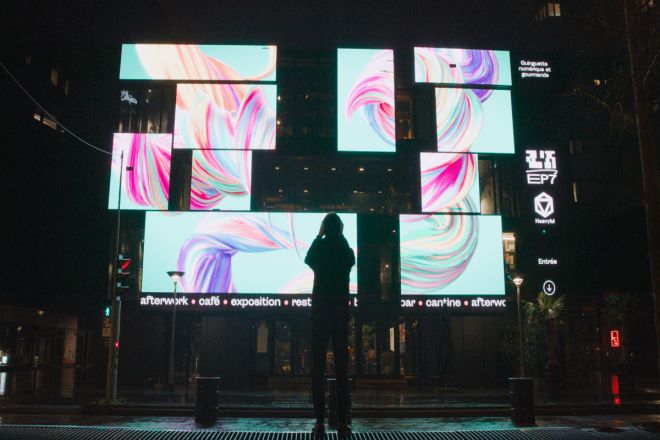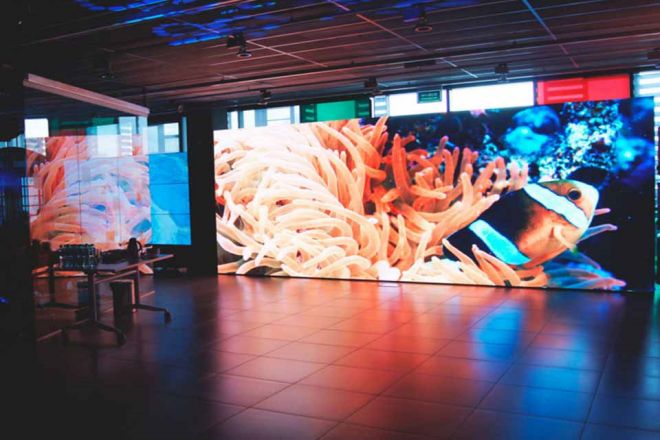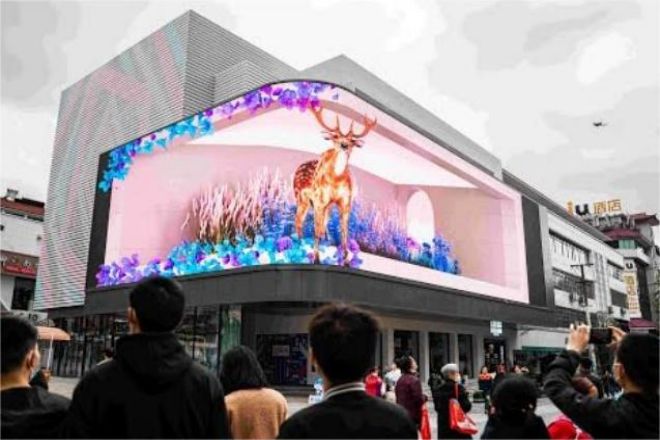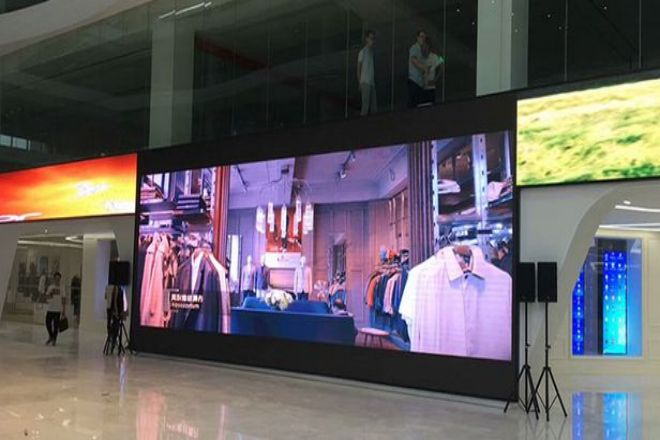介绍

随着科学技术的飞速发展, LED显示屏 被广泛应用于商业广告、信息发布、公益宣传等诸多领域,成为现代社会不可缺少的一部分。LED显示屏的显示效果、内容更新速度、故障排查的便捷性等都与其背后的控制系统息息相关。
因此掌握如何访问LED显示屏控制后台,对于保证显示屏的正常运行、提高内容更新效率、实现实时监控有着重要的意义。
但接入管控后台并不是一件简单的事情,涉及到系统安全性、操作的规范性、技术的专业性等诸多方面。
1、了解LED显示屏的控制系统
LED显示屏的控制系统是保证LED显示屏正常工作、高效显示内容的核心部分,下面将详细介绍其基本组成、主要功能以及不同品牌、型号之间的区别。
LED显示屏控制系统的基本组成
LED显示屏的控制系统主要由硬件和软件组成。
1).硬件部分:
设备主控制器:作为整个系统的核心,负责接收并处理来自计算机或其他信号源的显示信息。
LED显示屏点阵:由大量LED芯片组成,是显示图像和文字的基础。
电源:为整个系统提供稳定的电力支持。
发送卡与接收卡:发送卡将信号源,如电脑的输出数字信号,转换成高清的模拟信号传送给接收卡;接收卡负责接收数据,驱动LED屏正常工作。
2). 软件部分:
软件控制系统:主要用于图形编辑、字体的提取与保存、图像预览、文件传输等任务。
无线传输系统:负责将PC机的文件信息传输到LED显示屏。
3).控制系统主要功能
内容编辑:用户可以通过控制系统轻松编辑和更新LED显示屏上显示的内容,包括文字、图片、视频等。
播放控制:控制系统可以实现对显示内容的精确控制,如开始、暂停、停止、循环播放等。
效果设置:用户可以根据需要调整显示屏的亮度、色彩、对比度等参数,以达到最佳视觉效果。
4). 不同品牌、不同型号之间的差异
不同品牌、不同型号的LED显示屏控制系统的功能、性能可能会存在差异。
功能区别:有些高级的控制系统可能拥有更多的功能,比如远程监控,互动功能,节能管理等。有些基础款可能只有基本的播放和控制功能。
性能差异:不同品牌、不同型号的控制系统在处理速度、稳定性、可靠性等方面存在差异,部分高性能控制系统可以处理大规模图像数据,实时渲染播放高清视频等高质量内容。
兼容性差异:不同品牌、不同型号的控制系统与其他设备的兼容性也会有所不同,用户在选择控制系统时需要考虑其与现有设备的兼容性。
了解这些差异将有助于用户根据他们的需求和预算选择正确的 LED 显示控制系统。
2. 访问控制后端的前提条件

在接入LED显示屏控制后台之前,有几个重要的前提条件需要明确和满足,下面对这些前提条件进行详细的讲解:
1).明确所需的权限和认证要求:
访问LED显示屏的控制后台通常需要特定的权限,这些权限可能是由供应商、管理员或者系统管理员设置的。
身份验证需求通常包括多种方法,例如用户名和密码、指纹识别、动态令牌等,以确保只有授权人员才能访问。
2). 获取合法访问权限:
与供应商沟通:采购LED显示屏时,需要与供应商明确控制后台的访问权限和流程,供应商通常会提供初始的用户名和密码。
签订服务合同:在某些情况下,特别是大型或复杂的系统,可能需要与供应商签订服务合同,明确双方的权利和义务,包括访问控制后台的权利。
3).强调保护访问账户和密码的重要性:
访问账号及密码是进入LED显示屏控制后台的钥匙,这些信息泄露可能导致非法访问,带来安全隐患。
4).保护措施:
避免在公共场所或不受信任的网络中输入账号和密码。
使用强密码并定期更改。强密码通常包括大写和小写字母、数字和特殊字符的组合。
不要与其他系统或网站共享相同的用户名和密码。
定期审核帐户活动,以确保及时发现任何未经授权的访问。
3. 进入控制后台步骤
在访问LED显示屏控制后台时,需要按照下面的步骤进行,保证顺利进入并熟悉控制后台界面。
步骤 1:连接到网络
首先,确保您的设备(如电脑或移动设备)已连接到LED显示屏控制系统所在的网络。这通常可以通过有线或无线方式实现,具体取决于控制系统的配置和网络设置。确保网络连接稳定可靠,以顺利传输数据并执行后续操作。
第 2 步:输入登录信息
连接成功后您需要输入正确的账号和密码才能登录控制系统,您的设备屏幕上一般会显示登录界面,点击相应的输入框即可输入账号和密码。
请注意账号和密码区分大小写,请务必正确输入。如您忘记密码或账号,请联系供应商或管理员进行重置。
步骤 3:导航至控制后端
成功登录后,您需要找到并导航到控制后端界面。这通常可以通过点击主界面上的按钮或链接来实现。具体导航方式可能因控制系统而异,但一般来说,您可以在主界面上找到“控制后端”、“管理界面”或“系统设置”等选项。点击这些选项后,您将进入控制后端的主界面。
步骤4:熟悉控制后端界面
一旦进入控制后台界面,你需要花一些时间去熟悉它。控制后台界面通常包含多个功能区,每个功能区都有各自的具体功能。下面是一些常用的功能区及其介绍:
内容编辑区:此区域用于编辑和更新LED显示屏的显示内容,可以输入文字、插入图片、视频等多媒体内容,以及格式、布局等。
播放控制区:此区域用于控制内容的播放,可以设置播放计划、开始、停止播放、调整播放速度等。
效果设置区:此区域用于调整显示效果,如亮度、对比度、色彩等,您可以根据需要进行调整,以获得最佳的视觉效果。
系统监控区:此区域用于显示系统状态信息,例如网络连接状态,设备运行状态等,您可以在这里查看系统的实时状态,并进行必要的操作。
请注意,不同的控制系统可能具有不同的界面设计和功能布局。因此,在熟悉控制后台界面时,最好参考控制系统的用户手册或在线帮助文档,了解各个功能区域的具体使用方法和操作步骤。
4. 控制后台基本操作

1). 内容编辑
控制后台的内容编辑排版是LED显示屏日常运行中的重要环节,以下是详细步骤:
进入内容编辑界面:登录管控后台后,找到“内容编辑”或“素材管理”等相关选项点击进入。
上传素材:根据提示,上传需要在系统中展示的图片、视频、文字等素材。
2). 编辑排版:
对于文本内容,可以直接在编辑框中输入并设置字体、大小、颜色等属性。
对于图片和视频可以进行缩放、裁剪、旋转等操作,以适应LED显示屏的尺寸和分辨率。
使用所提供的排版工具,如文本框、图片框等,根据您的需要对素材进行排版。
预览并保存:编辑完成后,预览确认效果,无误后保存设置。
3). 播放控制
播放控制功能可以让用户根据需要设置播放计划,开始、停止播放等。
- 设置播放计划:
在播放控制界面,选择“播放计划”或“时间设置”等选项。
根据您的需求设置不同时间段的播放内容,比如设置特定时间段播放广告、新闻等。
- 开始和停止播放:
选择您想要播放的内容或播放列表。
点击“开始播放”按钮,系统将按照设置的计划进行播放。
必要时点击“停止播放”按钮可以中断当前播放。
4). 效果设置
效果设置功能可以让用户调整LED显示屏的显示效果,例如亮度、对比度、色彩等。
找到效果设置选项:在控制后台界面,找到“效果设置”、“显示设置”或类似的选项。
- 调整显示效果:
根据需要调整亮度、对比度等参数,以获得最佳视觉效果。
选择合适的色温,保证显示内容色彩准确。
如果还有其他高级设置选项,比如饱和度、锐度等,也可以做相应的调整。
预览并保存:调整完成后进行预览,确认效果正确后保存设置。
5). 故障排除
控制后台虽然主要用于内容编辑和播放控制,但也可以进行简单的故障排除和修复。
查看系统状态:在控制后台界面找到“系统监控”或“状态显示”等选项,可以查看系统运行状态及故障信息。
根据故障信息排除故障:根据显示的故障信息,检查可能存在的硬件连接问题、电源问题等。
重启系统:若故障不能立即解决,可以尝试重启LED显示屏系统或者控制后台软件恢复正常运行。
联系技术支持:若问题仍无法解决,建议联系LED显示屏供应商或技术支持团队进行进一步的故障排除和维修。
5. 高级操作和功能
1).定时任务设置
定时任务可以让用户可以设置LED显示屏在特定的时间自动执行某些操作,如自动播放特定内容、自动更新显示内容等,节省人工操作时间,提高显示屏使用效率。
- 设置步骤
在控制后台找到“定时任务”或者“计划任务”等相关选项。
点击“新建任务”,输入任务名称和描述。
设置任务的执行时间、执行频率(如每日、每周、每月等)、执行内容(如播放某个视频、显示特定文字等)。
保存设置后系统将在指定时间自动执行该任务。
2). 远程控制
远程控制允许用户通过互联网远程访问和控制LED显示屏,无论用户身在何处,只要能连接互联网,就可实时对显示屏进行操作和管理,大大提高了显示屏的灵活性和便捷性。
- 实现方法
确保LED显示屏通过网络与控制后台相连,且显示屏所在的网络环境支持远程访问。
在控制后台设置远程访问权限,允许特定用户或设备远程访问显示屏。
用户可以通过登录控制后台或者使用专门的远程控制软件对显示屏进行远程操作和管理。
3). 数据统计与分析
数据统计与分析功能可以帮助用户了解显示屏的使用情况、受众偏好等信息,为优化显示屏内容和服务提供数据支持。
- 功能实现
控制后台会实时采集显示屏的使用数据,如播放时长、观看人数、观众互动情况等。
用户可以在控制后台查看这些数据,并使用内置的数据分析工具进行分析。
根据分析结果,用户可以调整显示屏上的内容、播放时间等,以更好地满足观众的需求。
4). 系统更新升级
系统更新升级是维持LED显示屏最佳性能和安全性的重要手段,通过更新升级可以修复已知的系统漏洞、提高系统的稳定性和兼容性、增加新的功能和特性。
- 更新和升级步骤
在控制后台找到“系统更新”或者“软件升级”等相关选项。
检查当前系统版本及可用的更新版本。
下载并安装可用的更新包或升级文件。
安装完成后,重新启动显示以应用新的系统或软件版本。
请注意,在进行系统更新升级时,建议备份重要数据,以防意外情况发生。同时建议用户定期关注官方的更新升级信息,及时获取最新的系统功能和安全补丁。
6. 安全考虑

在使用LED显示屏控制后台时,安全性至关重要。以下是几个关键的安全注意事项,可帮助用户保护系统免受潜在威胁。
1). 定期更改密码
定期修改密码是保障管控后台访问权限的基本措施,长期使用同一个密码会增加密码被猜测或破解的风险。
- 推荐:
至少每三个月更改一次密码。
使用包含大写和小写字母、数字和特殊字符组合的强密码。
避免使用与个人信息相关的密码,例如生日、姓名等。
2). 防范网络攻击和病毒入侵
网络攻击、病毒入侵可能造成系统瘫痪、数据泄露或损坏。
- 推荐:
确保控制后台所在的网络环境安全,使用防火墙和入侵检测系统(IDS/IPS)。
定期更新系统和软件补丁,修复已知的安全漏洞。
限制远程访问控制后台,只允许授权用户和设备访问。
使用安全的网络协议(例如 HTTPS)进行数据传输。
3).不要随意安装未经授权的软件和插件
未经授权的软件和插件可能包含恶意代码并对系统构成潜在威胁。
- 推荐:
仅从官方或可信赖的来源下载和安装软件和插件。
安装前请仔细阅读该软件的用户协议及隐私政策,确保您了解该软件的权限和可能存在的风险。
定期检查和更新已安装的软件和插件,以确保其安全性和兼容性。
4).定期备份重要数据
数据备份是防止数据丢失或损坏的关键措施。
- 推荐:
定期备份控制后台的重要数据,如播放列表,设置参数等。
将备份数据存放在安全的地方,避免与原始数据存储在同一个地方。
定期检查备份数据的完整性和可用性,确保在需要时可以恢复数据。
遵循这些安全预防措施可以帮助用户降低LED显示屏控制后台面临的安全风险,保证系统的稳定运行和数据的安全。
结论
通过本文的介绍,相信大家对于如何接入LED显示屏控制后台已经有了清晰的了解。在实际操作中,我们不仅要注重技术的掌握,更要强调安全的保障。只有保证系统的安全、规范的操作,才能充分发挥LED显示屏的功能和价值,为商业宣传、信息发布等提供有力的支持。
最后,如果您想了解更多关于LED显示屏的知识, 请与我们联系。
